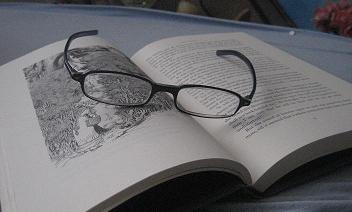Every once in a while I just do a nerdypost and go on about some subject.
Hello apples.
Plants use humans to their advantage - compare us to the bee, who thinks he is getting the best of the deal from flowers ...but really, plants are using the bee to reproduce. Same thing with humans. Apples taste good, and by appealing to our senses they have spread around the world.
The apple started in the forests of Kazakhstan. There are apple forests there, where apples grow wild, but most types of apples are inedible. From Asia the apple traveled both east and west, and "eating apples" became popular. Apples were brought to the New World as well. This is where it gets interesting.
It was a law in some areas of what is now the U.S. that settlers would have to plant a few fruit trees, to show they were staying. Johnny Appleseed became famous because he would go out a little ways and start orchards and then a few years later when settlers came he would sell them the saplings. He got quite rich.
Since most apples are inedible or at least taste bad the only way to get good eating apples is to do grafting - cloning the old plant by putting one of the old tree's buds onto the new tree. Now you have a clone of the original. But the interesting thing is Johnny Appleseed was this purist and he thought it was best not to mess with god's creations. So he planted seeds. In each apple every single seed is different from each other and the parent fruit. This is a way that the fruit adapts to environments. Because of this adaptation you can have a delicious apple and plant it's seeds and get no good eating apples.
So settlers end up with all these inedible apples. There was a shortage of clean drinking water, and so the setters used the apples to make cider. It turns out that the best apples for making alcoholic cider and actually the bitter inedible apples they all had. Everyone started doing it! President Adams drank it with breakfast every morning. But then drinking and public drunkenness went up and there was a public outcry against alcohol, and cider especially. Protesters actually went out and chopped down apple trees. This was the beginning of the prohibition movement, outlawing alcohol. The farmers who had hard cider orchards could no longer make cider, since it was against the law. So they had to change their market, and they planted seeds and kept their eyes out for good eating apples. When they found a good apple they would use grafting to clone the eating apple, and they would make all of their trees that one kind of eating apple. They would name it and keep cloning trees with the goal of selling their apples nation wide. This is how we got the varieties you see in the store - Fuji, Red Delicious, Honey Crisp, Granny Smith, Pink Ladies, etc.
But if you are cloning all these apples and not allowing them to evolve, problems like disease, bacteria and pests have a chance to catch up and break through the apple's defenses. If you know anything about potatoes, same thing happened with them during the potato famine. So farmers use pesticides and throw billions of dollars of chemicals on these apples — that we eat.
Thankfully some people see the obvious solution — let the apples evolve! Some farmers have apple collections with over 5,000 different types of apples and they use them to breed and to experiment with, in the hopes of using some of the apple's natural defenses against pests. I would hope that farmers would cross breed randomly, but customers want the specific varieties of apples they are used to. So instead farmers are genetically modifying popular apples, adding new genes to help their defenses.
I think we should just embrace the diversity of apples. One farmer realized he couldn't compete with the big corporations making popular apples, so he switched to antique eating apples which are good for eating, but not sweet like the ones in the store. Most apples are not very sweet, but the ones that became popular are super sweet. The farmer grew all of these apples of varying sizes, colors, textures, acidity levels and sweetnesses. Some even had backdrops, like one had a nutty flavor. But he couldn't make a living selling them so he went back to growing good old fashioned hard cider apples — and oddly enough the best apples for hard cider taste horrible.
Apples have intertwined their history with ours, and by using us they have spread almost everywhere we have. They started out in just a small forested area in Kazakhstan and by tempting our desire for sweetness they have assured that their seeds will be grown and their species will thrive.
I just find this all amazing. How the apple changes and how we help and hinder that process, the varieties, what they can be used for. And can you imagine apple forests? Seriously, a forest of apple trees. I got all of this information from the documentary "Botany of Desire", based on the book by Michael Pollan.
Friday, January 22, 2010
Subscribe to:
Post Comments (Atom)
Fin?




No comments:
Post a Comment